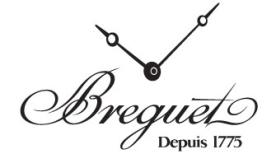Swatch Group is a master of the art of coming up with unique business models. The most famous example is the Swatch itself, which, 40 years ago, put watches back on the wrists of people who had stopped wearing them. The concept gave a welcome boost to the entire watch industry and was a huge success – sadly, never repeated. In 2013 Swatch Group attempted to move from quartz to mechanical movements, with the automatic Sistem-51 Swatch watches, but it didn’t have the same effect.
Looking back, it’s easy to see why. There were two reasons. First: the price. A quartz Swatch costs between CHF 60 and 150. The equivalent Sistem-51 timepiece cost double that, and not all clients were prepared to make the investment. The Sistem-51 was perceived as being too much “Swatch” and too little “mechanical” – particularly given its CHF 250 price tag.
The second reason was its vibe. A Swatch is an affordable everyday watch. When the time comes to change the battery, owners will often choose to buy themselves a new watch. Swatches are seasonal, something the brand embraces. New Swatches are launched every 30 to 45 days – not something you expect for a mechanical watch.

Brand collabs
But, with Swatch Group’s internal “collabs”, the situation has changed. The idea is to bring together two different brands from the same group, around a single watch model. The first should be a premium brand (Omega and Blancpain so far) and the second, entry level (Swatch).
This is not a completely new concept. When Louis Erard (base price CHF 2,000) joined forces with Kari Voutilainen (base price 50x higher) to create a limited edition, they were already at opposite ends of the market. But both brands are distinctive in their own ways, which meant that a special collaborative limited edition didn’t affect the fundamental positioning of either brand.
But when Swatch Group brings together two of its own brands, it’s rather different. For 30 years, the group has been very careful to ensure that its brands don’t tread on each others’ toes and cannibalise sales, creating a clear price pyramid with models and relative positionings effectively carved in stone. Swatch sits at the base of the pyramid, followed by Tissot, Hamilton, Mido and Longines; then comes Omega, and at the top, the premium trio of Jaquet Droz, Blancpain and Breguet.

A difference of opinion
The idea of associating a premium brand such as Blancpain with Swatch might therefore seem counterintuitive. The operation skips a large handful of intermediate brands, and would appear to demolish fences carefully maintained over three decades. Might it not debase the image of the premium brand? Would anyone want to buy a Mercedes Lada? A Maserati Punto? A Lamborghini Dacia?
Clearly, the answer from both the general public and serious collectors is a resounding “yes”. Omega X Swatch was a massive hit, with one million watches sold in 2022 alone. The figures for 2023 haven’t been published, but they are expected to be similar. The general public love it. Investors – not so much. In January 2023 Swatch Group shares were valued at CHF 300. A year later, in January 2024, their value had dropped by almost a third (CHF 217). Correlation is not causation, but the parallel is worrying.

Open questions
The exercise with Omega, Blancpain and Swatch poses a number of questions. Will Swatch Group continue the operation, for example with a future Jaquet Droz X Swatch or a Breguet X Swatch? The strategy being implemented by Alain Delamuraz for Jaquet Droz would appear to allow it. He wants to revitalise the brand – why not a one-off collab with Swatch?
For Breguet, the situation is trickier. It would mean connecting a premium manufacture, Swatch Group’s flagship brand, to its diametric opposite, the Swatch, a 100-franc accessory made of plastic and quartz. The benefits would appear to flow in one direction only – and not to Breguet. But without going to such extremes, Swatch Group nevertheless has an entire range of intermediate brands for which the exercise could be beneficial. For instance, associating Swatch with Tissot or Hamilton would make sense, since they share many of the same clients.
The idea could have traction beyond Swatch Group alone. Richemont, for example, owns 27 brands. Collabs between different watchmakers would be a different issue, given how slim and permeable the boundaries between different haute horlogerie maisons often are. Nevertheless, it might be possible to combine two complementary fields of expertise, such as jewellery, watchmaking and fashion. A limited-edition Jaeger-LeCoultre X Buccelati collab could be very lucrative, as could Baume & Mercier X Chloé, or IWC X Purdey. Swatch Group has pioneered a concept – it’s now up to the market to explore the opportunities.









